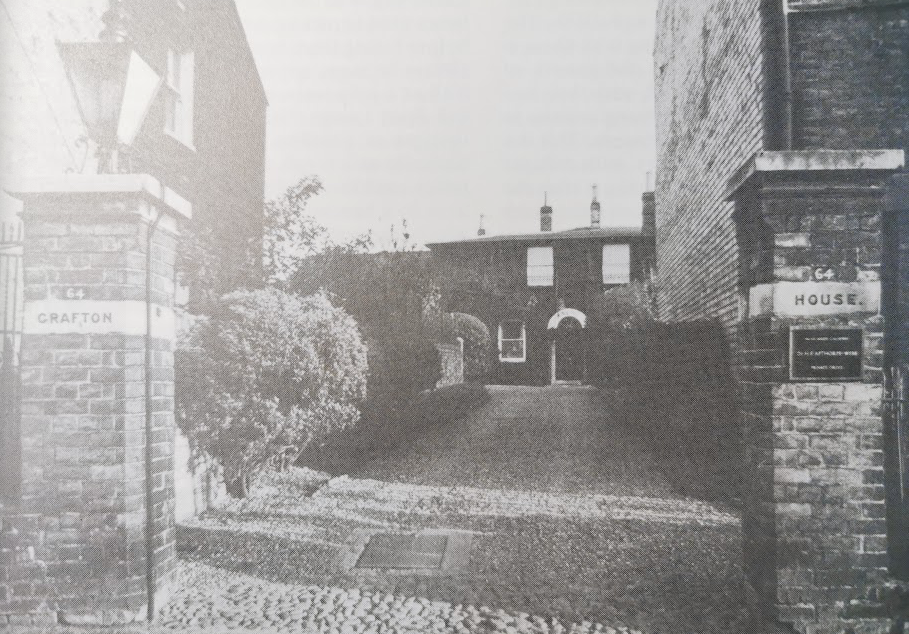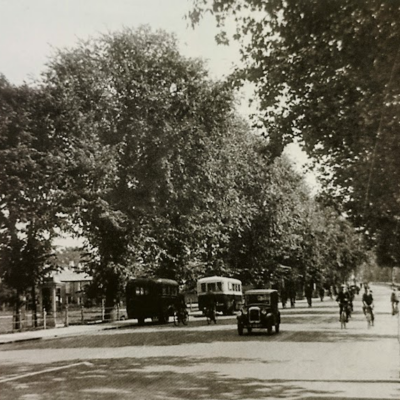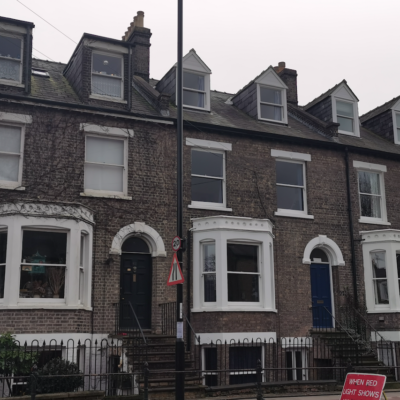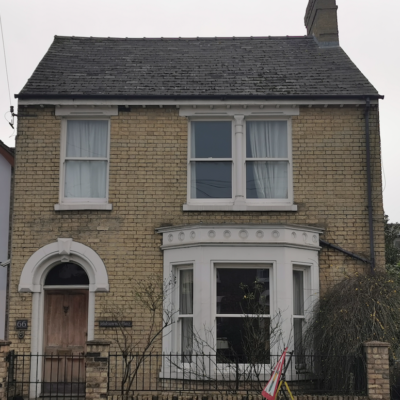Search by topic
- archaeology
- Building of Local Interest
- charity
- church
- crime
- dressmaker
- fire
- Great Eastern Railway
- Listed building
- Mapping Relief
- medieval
- oral history
- poverty
- Public House
- Rattee & Kett
- Religious House
- Roman
- scholar
- school
- Then and Now
- tudor
- women
- work
- world war one
- world war two
Search by text
 Grafton House, Maid's Causeway
Grafton House, Maid's Causeway64 Maids’ Causeway, Grafton House
History of 64 Maids' Causeway
John Grafton ( 1796 -1872) was a pupil of Clegg at the Chartered Company from 1813 to 1817. From 1815 he was working as a `consultant’ or was `on loan’ to the Preston Gas Light Company, probably on Clegg’s behalf. On completion of his articles he left the Chartered Company to take charge at Wolverhampton. He later moved to Cambridge in 1835. His inventions , patents and improvements included a hand lamp for lamplighters, retorts with clay linings, mixing lime with alkali in dry form for use in purifiers, fire clay re- torts constructed in sections, a retort stoking machine and a triple bell exhauster. (http://www.mae.uk.com/Samuel%20Clegg.PDF)
A B Gray in Cambridge Revisited (1921) notes:
John Grafton [whose house this was] figures prominently in the annals of street lighting in Cambridge. It was not until 1823 that we find the town lit by gas, and then only by what was known as “oil gas”, but a few years afterwards Grafton contacted with the Commissioners for the lighting of our streets with the new “inflammable air or gas obtained from coal.” Opening out of Staffordshire Street is Gas Lane, and doubtless it was somewhere in this locality that Grafton first set up his gas-retorts, subsequently removing his plant to the site of the present Company’s works, shown in Baker’s map of the town in 1830.
In 1834 a company was promoted to take over Grafton’s plant and contracts as a going concern, and with this object in view the necessary parliamentary powers were obtained by an Act passed in the same year. Grafton’s company was taken over by the Cambridge University and Town Gas Light Co. in 1834 which had a contract until 1868.
Grafton’s early gas works consisted of square ovens built of firebrick, holding 4-5 cwt. of coal at a charge, much more than had been possible in the small cast iron retorts. The coal was brought to Cambridge by river using boats called ‘lighters’ from Kings Lynn.
1820-1840 John Grafton seems to have lived in Cambridge in the 1830s up until about 1840.
See also Grafton and Gas by Alan Brigham, Cambridgeshire Local History Society Sept 2004.
1830 house appears on Baker’s map of 1830.
1841
[John Grafton]
Eliza Grafton
3 children
4 servants
1851 Grafton House
John Smith, architect
1854
William Waters, insurance agent, moved here from Jesus Lane.
Benjamin Jolley was the next owner after Waters. He developed Grafton House’s garden frontage on Maid’s Causeway by building some Victorian Houses. He sold the house to Frederick Webb.
1913
Frederick Edward Apthorpe Webb, surgeon to Infectious Diseases Hospital.
The ‘Find A Grave’ website notes the following:
After studying at Downing College , Cambridge to become a surgeon, Frederick spent time at St Bartholomew’s Hospital (M.R.C.S. L.R.C.P.- 1894). He practised in Maids’ Causeway, Cambridge and spent time as a Medical Officer in the Cambridge fever hospital. He served in the Great War, 1914-19 as Lieutenant-Colonel in the Royal Army Medical Corps and was mentioned twice in dispatches.He was also awarded an O.B.E. He died on August 17th 1934, aged 65, at Cambridge and was buried on 20th August 1934.
‘Catholics in Cambridge’ ed.N Rogers p123 states: Dr Apthorpe-Webb (a parishioner [of the Catholic Church]) served as registrar of the hospital (Major F E Apthorpe-Webb RAMC) and was responsible for setting up the Bath Ward, a pioneering medical development in the use of baths for the relief of severely wounded patients.
Contribute
Do you have any information about the people or places in this article? If so, then please let us know using the Contact page or by emailing capturingcambridge@
License
This work is licensed under CC BY-NC-SA 4.0










